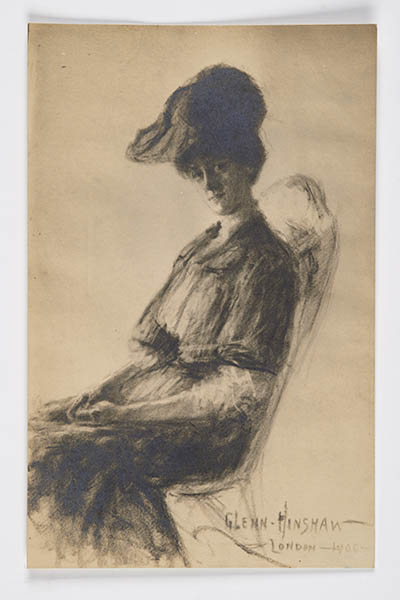About this object
-
Maker:
Hinshaw, Arthur Glenn
-
ID:
58.87/38
Production date:
1906
-
Location:
In Store
-
Louise Eates (1877-1944) was encouraged to become a suffragette by her husband, Dr Augustus Eates a General Practioner based in Kensal Rise. Prior to becoming a Suffragette, Louise was Honorary Secretary of the Investigation Committee of the Women's Industrial Council, helping to produce reports on women's trades. In 1906-07 Eates assisted with the formation of the Kensington branch of the Women's Social and Political Union, and became its Secretary. Under Louise's co-leadership Kensington became one of the most active and financially successful of the WSPU national branches, responsible for raising considerable funds for the campaign. In 1909 Louise served her only term of imprisonment for militancy having been sentenced to 1 month in Holloway prison while taking part in a deputation to Parliament Square with Emmeline Pethick-Lawrence. On her release in May 1909 Kensington WSPU gave their secretary a 'royal welcome' and presented her with an enamel pendant designed and made by the enamellist and jewellery Ernestine Mills. In 1910 Eates worked as WSPU organiser for the Kensington (North) Division during the general election campaign and in December 1910 in the constituency of West St. Pancras. At the end of 1910 Eates left London with her husband to travel to India and Vienna. They returned to London in 1913 where Eates resumed her interest in the suffrage cause by joining the United Suffragists.
< ...Read more -
Measurements
H 136 mm; W 87 mm (overall)
-
Materials
card; ink
-
Last Updated
2024-03-22
Record quality:
Not every record in Collections Online is complete. Some have low quality images designed purely for recognition, while some have been catalogued only to a basic standard. This graphic is designed to give you an impression of the quality of data you can see. 100% meets all our current data standards and has a high quality image, 20% is a basic record with no image. Individual record quality can change over time as new photography is carried out and records are worked on.
X







